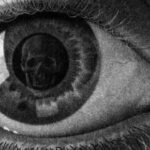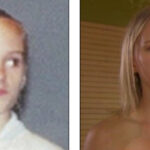
WAWADIA Update #14: Practicing Yoga in the “False Body”
September 30, 2014
Why Are Some Folks Distorting and Dismissing Chelsea Roff’s Article on Anorexia and Yoga?
October 11, 2014
So the response to Update #14 has come fast and rich. You can read that piece in full here, or just roll with this nut graf, woven from Winnicott and Orbach:
Some people might be getting hurt in yoga because they are practicing in the bodies they fantasize about, instead of the bodies they actually have. Bodies they fantasize expressing a happiness that is not truly there. Bodies they fantasize as expansive when they actually feel like retreating, or expressive when they feel choked. What happens to the tissues when the mind presses them into the performance of a fictional suppleness and strength? Can the fantasized body push the real body, the inner body, too far, too fast?
Commentator “Stephanie” left the following reflection in the thread. It’s so poignant I’ll make it the heart of this brief posting, and follow it up with a few raw thoughts:
______
I’ve noticed a split between the body I have and a fantasy body. For me, the dichotomy is simply ‘injured’ and ‘not injured.’ When I’m practicing with an Injured Body, I remember the NonInjured one, and try to work back to that. When I’m not injured, I fear the remembered injured body, and try to design/constrain/devote my practice towards the ideal of non-injury. I feel a sense of devotion or thanks to all the tiny details in practice that have (in my mind) kept me injury-free that day. It becomes almost a game of micro-management in figuring out the puzzle of what makes the body present itself that day as injury-free. It’s a continuous game of trial and error. There are some moments when it all makes sense, and I’ve figured out the solution to the puzzle, and then there are moments when the bubble bursts and I’m back to the Injured Body. Then the game begins again. Trial and error, until another solution presents itself, and the NonInjured Body returns. So in practice I’m either puzzling over one self or fearing the other.
There are days when the bow at the end of practice feels like a bow to the universe to keep this tenuous connection going with the Uninjured Body. As if to say, thank you (Universe, Powers that Be, The Way, The Force) for keeping this Good Body here; please let it be here again tomorrow. Though I try to control it (by figuring out a ‘solution’ to the injury) the Injured Body always returns, with another injury, or the same one, returning.
______
So there’s a body-self that feels at ease. It is remembered, re-membered, cherished, wooed, thanked. It is the gift of a higher power. It is a fetish-object when it seems far away. There is something original about it: the body I had before all this happened. (When I was child, before I gave birth, before my divorce.) There is something futuristic about it: the body I might have when all of this is over.(After all this work. Maybe in the summer… yes, the summer.) The “I” flows eagerly towards this body-self, petitioning for an alliance. We visualize it, set an intention to become it, or to let it shine through. In medieval hatha literature it is described as a youthful body, an immortal body.
And then there’s a body-self that feels on-edge, in pain, recoiled, protesting, but somehow inevitable. It threatens to overtake, to absorb the “I”, which turns away from it, or prays for it to leave.
For Stephanie, it seems that asana is a laboratory in which these two bodies oscillate and exchange, grounded and marked by palpable movements and sensations: good feelings and bad feelings. The two bodies appear to a self-sense that wants to choose one over the other, but cannot.
I wonder: is this reflective of the dialectic at the root of being conscious? That we can always imagine ourselves to be other than we are? The guru might tell us to exploit this capacity, and visualize our perfected state, telling us that we are already whole and free. The psychotherapist might question the use of the fantasy.
Of course: imagining a false self, a false body, a perfectly UnInjured Body is also a part of who we are. It’s not flaw, but something to be managed.
Is practice itself a splitting mechanism, isolating “I” from “body” and “mind” — paradoxically — so that their relationships may become more visible? Is the task to relax into their tensions, so that there tensions are felt as a game or puzzle, as Stephanie describes? Perhaps the Injured Body can give existential grace if we forgive it. Perhaps the UnInjured Body sustains wonderment. Between these two, the I-sense flows.
The older question, from the Upanishads and elsewhere, is: Who is this “I” who feels, inhabits, and uses both the Injured Body, and the NonInjured body, and every body in between? The ancients felt that the “I” preceded all bodies, instead of being generated by their dialogue. Nowadays, between neuroscience and developmental psychology, this old view is fading into literary quaintness. Stephanie’s “I”, considered today, is not the eternal observer bearing witness to temporal bodily states, but the fractured product arising from those states.
Stephanie’s lovely comment doesn’t stop at the personal, but extends to the social, hinting at the self-sense cloven by capitalism (as if it wasn’t hard enough to feel the splits of conscious life to begin with):
______
I feel that a split personality is intrinsic to living in a commercialized society. There is always a split between the ideal self that the advertiser wants for you, and the actual self that you have for yourself. It is very hard to know one’s real self, the authentic self, when the messages all around us every day present never-ending variations on an Idealized self. Physical and personality ideals are presented constantly via advertising and entertainment. They’re impossible to avoid, so it takes a solid inner practice of some sort to filter them out and connect back to a deeper, truer self. It takes *work* not to internalize the Ideal/false selves we are socialized to emulate. This applies to the yoga world as well, in terms of yoga advertising imagery and idealism.
______
Absolutely. Here in the marketplace, we stand in our Injured Bodies, looking at life-sized pictures of UnInjured Bodies. Strange mirrors, reminding us of what we’ve lost or never had where we’d like to go. We feel a double ache: Not only do I hurt, but I do not have that. Advertising offers us, unconsciously, the anti-mantra: I am not that.
Hopefully, as we step into the studio, we can let this stand-off soften, instead of entrenching it further. We stand at the door, plastered with workshop advertisements showing bodies in states of non-injury — we pause for a moment in an old tension. Maybe we can shake it off, step inside, and roll out a mat where all of our bodies can meet.